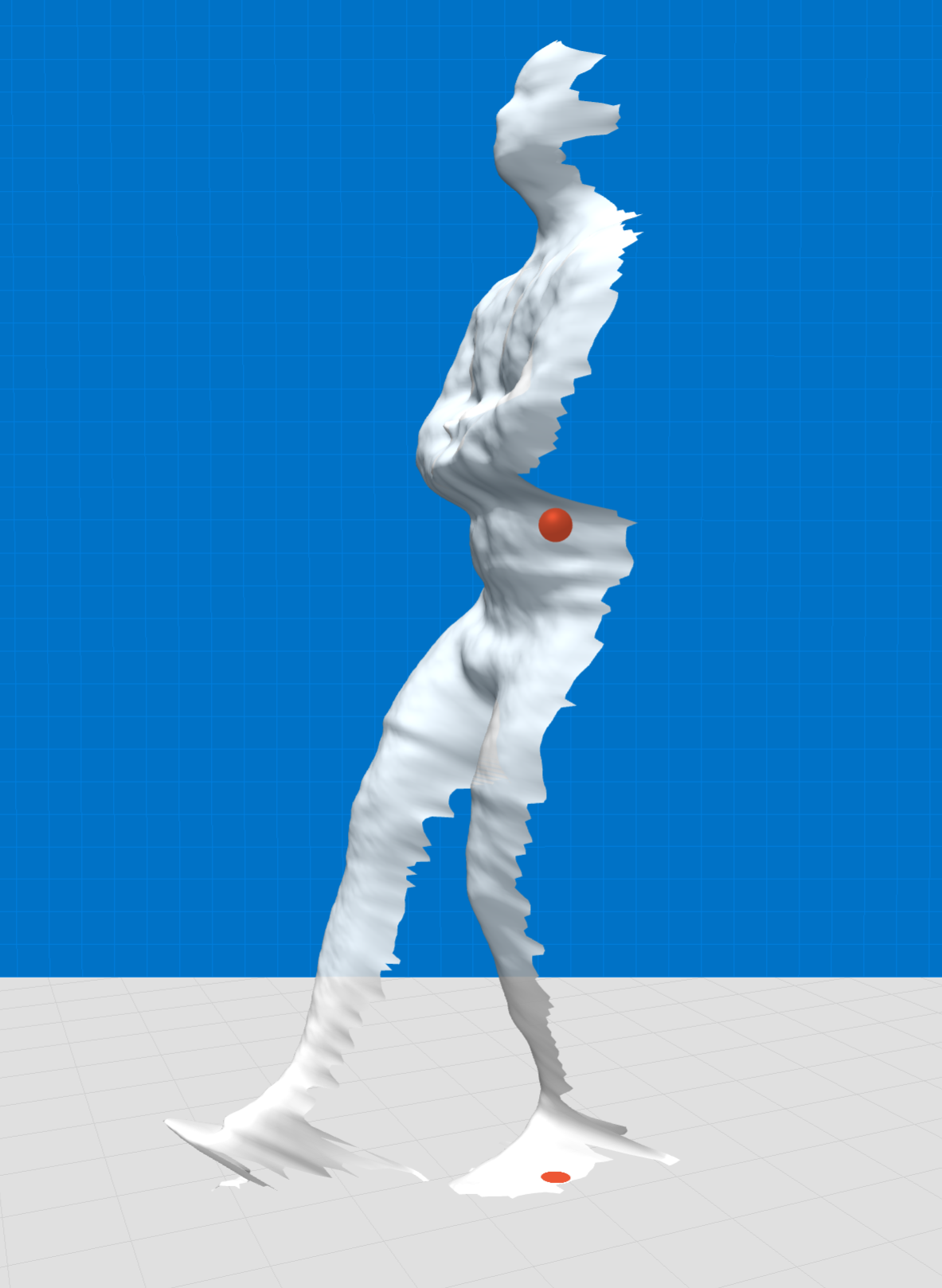Error Messages
We try to make the scanning process as simple as possible. That means being very clear about how to prepare for a scan and how to perform the tasks. Good data in means good data out!
If the clothing is unsuitable for scans, we prefer not to scan at all.
If the exercises are performed in any old fashion, then there will be too much variability in the data, creating less powerful insights.
Clothing error
The software scans the test person’s clothing before they start a test to identify clothing that does not scan thoroughly automatically. Any unsuitable items will be highlighted in red and white stripes and should be removed or replaced to resume the scan. Some material or even topical creams do not produce excellent recording signal, so they are rejected to preserve the quality of the data used for accurate measures.
The sensor uses invisible infrared light rather than natural light, and it sees the world differently to humans. So, unsuitable items may not be recognisable by the naked eye. Once the person has removed the clothing, press ‘Try again’ to calibrate the person again and to see if the problem is resolved.
The clothing check occurs after the personal data is entered, but before the recording begins.
Movement errors
If the squat is too shallow, the person will be asked to repeat the movement and to squat deeper.
Main reasons for movement variation
Ability of the test person to follow audio or video instructions
Ability of the test person to control movement voluntarily
Tracking error by the system due to environmental factors, clothing or extreme/unusual movements
The sensor can be confused by:
long hair,
feet that are too close together,
hands that are touching the legs,
limbs that are placed in the wrong position or cross over each other.
The system recognises movements that do not follow the instructions, and the test person may be asked to repeat the task. Standardising the execution of the movement within certain boundaries helps to improve the repeatability of testing, and allows us to compare results between test. If the movement is not consistent with the basic instructions, the test person has the opportunity to repeat the movement. After three attempts, the test person will be asked to end the task or perform an easier modified version. If there is any doubt about the safety of a movement, the test person should ask for supervision or terminate the scan.
Although individuals follow the instructions, it is natural to witness some degree of variation in movement, much like there is variation in tone of voice. Humans are not robots, so one should expect natural tendencies over time, but an occasional variation.
The consistent performance improves by asking people to follow the instruction video before a recording. The test person is then familiar with the task required of them, especially when experiencing the timing of the exercises.
Feet point forward.
Keep your thumbs turned out and avoid touching your legs.
Keep your feet 15 cm apart.
Standing still error
Don’t lift your foot.
Keep your thumbs turned out and avoid touching your legs.
Don’t bend your knee.
Side bending error
Fold your arms across your belly.
Feet point forwards.
Sorry, avoid crossing the leg.
Sorry, leg too high.
Leg forward, not behind.
Sorry, leg out to side.
Single leg balance error
Fold your arms across your belly.
Feet point forwards.
Not enough knee bend.
Knees must move forward over the feet.
Double leg squat error
Cross your arms across your belly.
Feet point forwards.
Moderate knee bend but not full.
Sorry, avoid crossing the leg.
Sorry, leg too high.
No leg behind.
Sorry, leg put to side.
No high hip.
Single leg squat error


